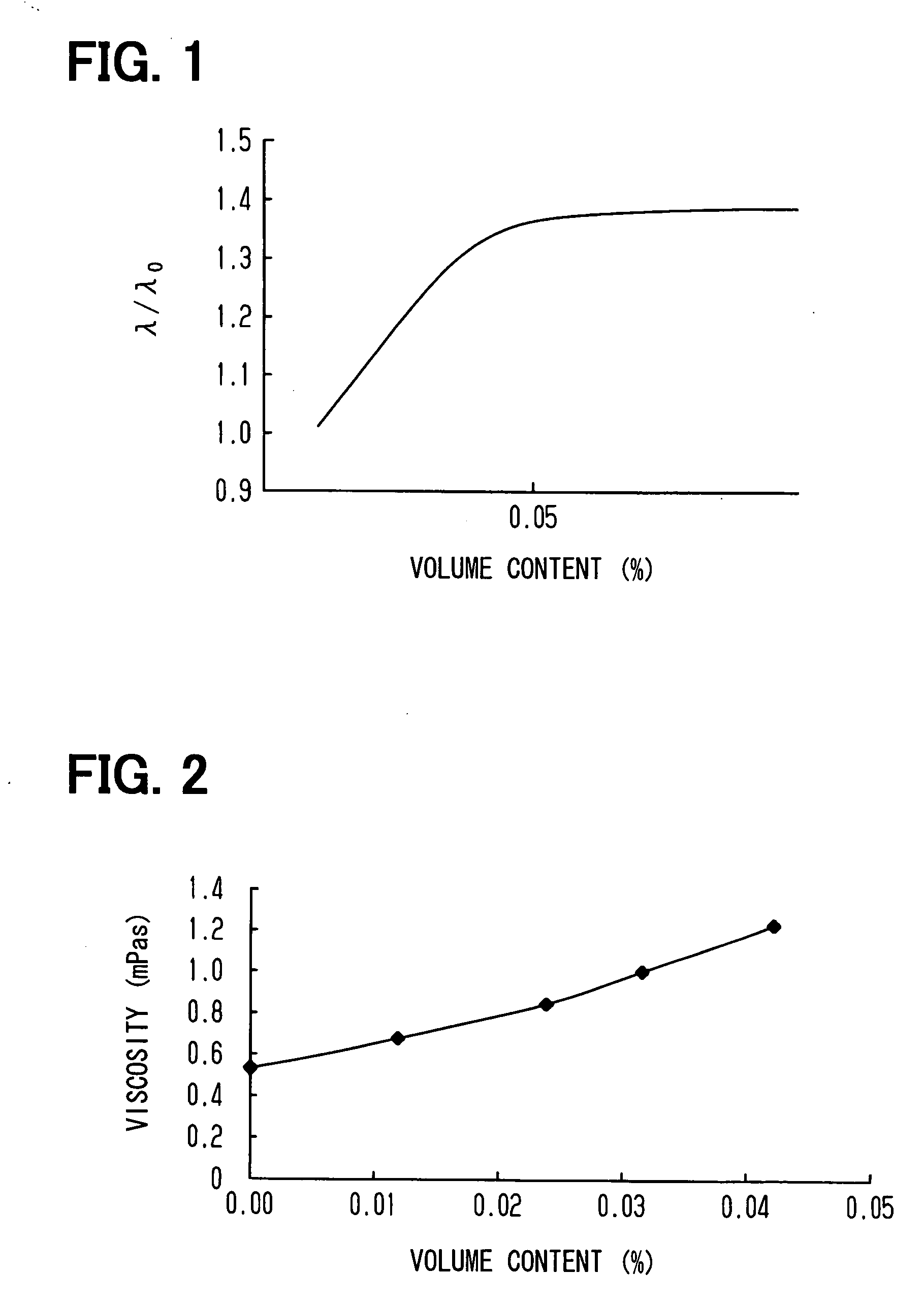Heat transport medium with fine-particle dispersion
a technology of fine particles and transport medium, applied in the direction of heat exchange elements, chemistry apparatuses and processes, etc., can solve the problem of limited methods for improving the thermal conductivity of the medium, and achieve the effect of improving the heat transport capability
- Summary
- Abstract
- Description
- Claims
- Application Information
AI Technical Summary
Benefits of technology
Problems solved by technology
Method used
Image
Examples
first embodiment
[0026] A fine-particle heat transport medium according to a first embodiment of the present invention will be described below with reference to FIGS. 1 to 3.
[0027] The fine-particle heat transport medium according to the first embodiment is a medium for transmitting and transporting heat from a heat source to the outside, for example. The medium used in the heat transport medium is made of an organic solvent, such as toluene, which contains fine particles, such as gold (Au), having a higher thermal conductivity than that of the solvent. More specifically, the fine particle of gold is composed of an aggregate of gold atoms, and has a diameter of about 1.5 nm. The use of the fine particles, which has a diameter of 2 nm or less, up to 10 nm experientially, drastically increase the surface area of the fine particles dispersed into the medium. On the other hand, a detergent for protecting each fine particle and enhancing dispersibility thereof is added to the medium. The detergent is on...
second embodiment
[0039] Next, a heat transport medium with fine-particle dispersion according to a second embodiment of the present invention will be described below.
[0040] The heat transport medium with fine-particle dispersion of this embodiment is used as a coolant (LLC: Long Life Coolant), like the previous embodiment. The second embodiment differs from the first embodiment in that the medium mainly consists of water containing a liquid freezing-point depressant, such as ethylene glycol, propylene glycol, or the like. Thus, the medium of this embodiment becomes a so-called anti-freeze solution which does not freeze up in the normal use. On the other hand, iron oxide particles or the like having a diameter of, for example, 10 nm or less are used as the fine particles to be dispersed into the medium. In order to enhance the dispersibility of the fine particles into the medium, the detergent is added to the medium. The detergent is one having the thiol group which tends to be attached to metal par...
PUM
 Login to View More
Login to View More Abstract
Description
Claims
Application Information
 Login to View More
Login to View More - R&D
- Intellectual Property
- Life Sciences
- Materials
- Tech Scout
- Unparalleled Data Quality
- Higher Quality Content
- 60% Fewer Hallucinations
Browse by: Latest US Patents, China's latest patents, Technical Efficacy Thesaurus, Application Domain, Technology Topic, Popular Technical Reports.
© 2025 PatSnap. All rights reserved.Legal|Privacy policy|Modern Slavery Act Transparency Statement|Sitemap|About US| Contact US: help@patsnap.com


